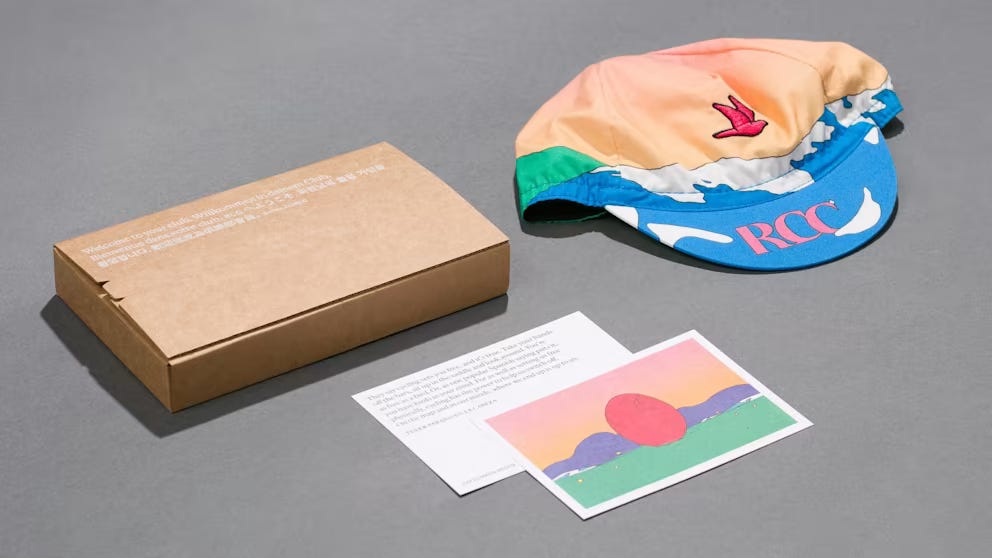I’ll be discussing how brands and creators can outperform over the next decade and why this is one of the greatest times to be “standing out” in the sea of the same.
But first, story time…
Today, I arrived in downtown Toronto. I was surrounded by big monolithic glass skyscrapers.
I woke up and asked myself:
“Wait, where am I again?”
It could have easily been downtown Sydney or downtown San Francisco. The same signs of big banks and big multinational companies. The buildings have the same vibes.
This has to do with the copy & paste effect.
Cities are all beginning to look the same. New buildings are basically copy and pasted.
The result is you enter a sea of sameness. Whereas cities used to be as unique snowflakes (think the streets of Paris), today many of them are being robbed of their individuality. The feeling is a bunch of placeless places.

Like cities, social media posts are also all beginning to look the same.
Top TikTokers use the same format. Fast camera, trendy audio, big bold captions.
Top Twitter accounts use the same format. Threads, one line quick insights and having their friends engage with the content. It all kinda feels the same.
Creators get sucked into the dopamine treadmill. It feels good seeing likes go up, and way easier to copy and paste than invent. New inventions are fragile, what’s already working is stable. The result is tweets that look and feel the same.
I call this “sameness” trend the fast-foodification of everything.
It’s this feeling that we’re in a sea of the same. It all feels sterile. This is mediocrity at its finest.
Why fast food?
Well, fast food is something that is convenient and tastes good in the moment. But once you start driving home, you start feeling the effects. That KFC isn’t sitting well.
Fast food content. Fast food cities. The rise of standardization.
Standardization makes it easy for you to know what to do or where to go. Chances are if you walk into a Starbucks you instinctively know where the barista is standing or where to run to the bathroom. It’s extremely intuitive. People psychologically do well when they expect what they are looking for. No surprises.

But, I think we’ve reached peak sameness
The most iconic brands and creators that will be created over the next 10 years won’t be cookie-cutter, they’ll be community-based. The result will be more unique experiences.
Like most things, “all that’s new is old”. Human beings are used to being community-based but industrialization and standardization has made convenience the #1 priority not community. And now we’re shifting back to community-based.
Examples include farmers markets booming, vintage shopping booming, shopping local is booming and community-based brands like Rapha are taking off.
A few years ago, Rapha was almost out of business. Now, they’re a top cycling apparel brand that uses its community to spread.
They support 800 cycling chapters who do 1000+rides each month with 23 000+members globally.
Not only is it a lifestyle apparel brand, but for $95/year, you can sign up to their membership called RCC or Rapha Cycling Club.
You get:
A year-long membership to the Rapha Cycling Club, based around our global network of Clubhouses
An active cycling community of members who share a common love of the sport
Includes a welcome Member’s Pack with an exclusive RCC cotton cap designed by Spanish illustrator, Maria Medem, inspired by the ‘free as a bird’ feeling riding gives you
Access to a wide array of rides, events and experiences available just to members
Be the first to hear about their most anticipated product releases and kit collaborations
TLDR; you not just buying a cycling jersey, you’re buying into a cycling community
Building a winning community-based brand is the process of being laser focused on a people with a shared identity, develop something for them that makes them feel heard. That includes:
A brand identity that sparks excitement
A shared language among this group and copywriting that is unique to them
Social content that makes them want to share yet feels aesthetically unique
Places for the community to gather and do activities both IRL and digitally
Habits and rituals for the community to be reminded of why your brand matters and to partake in the experience
A brand that stands for something
While convenience is key and will always play an important role in what people consume, the brands and creators that speak to you will be the ones that rise the fastest.
I don’t know about you, but sometimes when I’m walking in city streets, I get this sense that people are getting lonelier and lonelier. Products that uplift them will connect the disconnected. And those brands and creators, will be the top ones over the next decade.
Fast food is popular right now, but the tides are shifting.






👍👍
Someone needs to read up on Niels Pflaeging and Taylor's bathtub